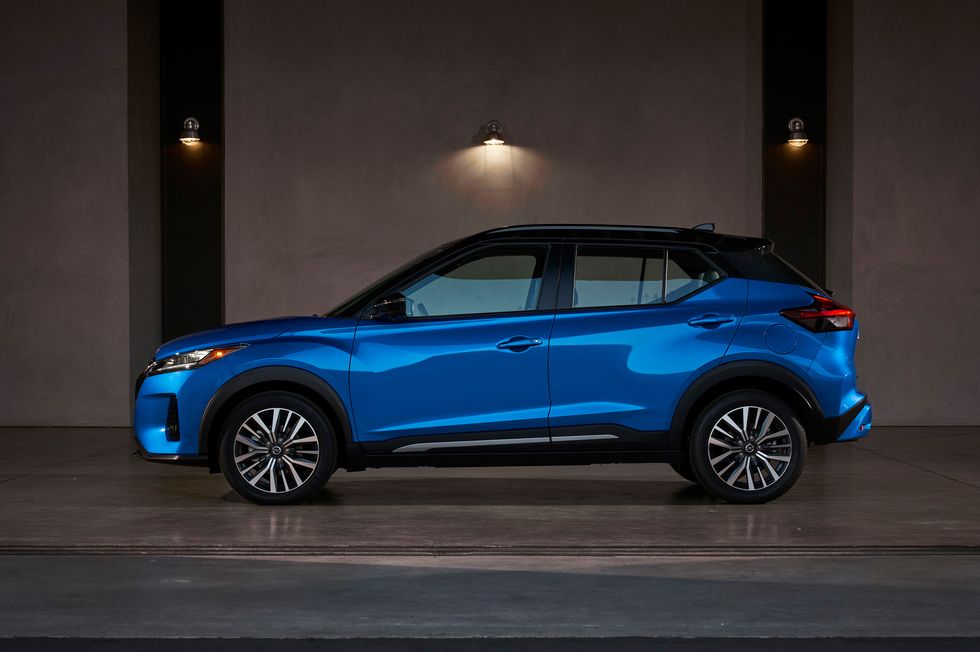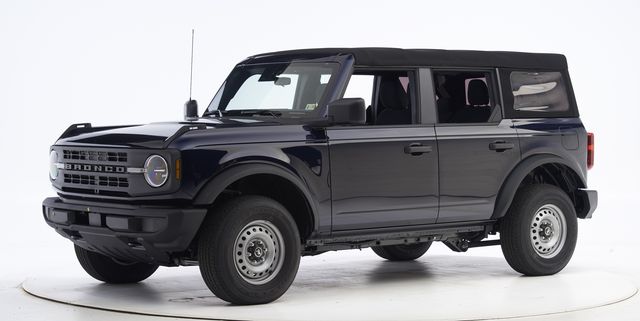
Dec
Despite the fast-paced growth at the subcompact end of the SUV marketplace, many of the players in this segment are really small hatchbacks masquerading as crossovers. They may speak the language of SUVs, but with a car accent. Some of these smallest crossovers don’t even offer all-wheel drive, an omission that tempts us to classify these models as subcompact cars even though they feature slightly higher driving positions and SUV-ish styling. Among this group of wannabes is the Nissan Kicks, which gains a few more features and a bit more style for the 2021 model year, thanks to a modest mid-cycle refresh.
The most obvious changes are a larger grille and pinched headlamps, both of which give the Kicks a bit more attitude. The rear bumper and liftgate have also been tweaked, and a new light strip between the taillights helps hide the wee Nissan’s relatively narrow proportions. New wheel designs and revised paint colors round out the visual updates.
Inside, the center console has been reworked to include reconfigurable cupholders with removable inserts, an armrest between the front seats, and an optional electronic parking brake. While these enhancements provide a more premium vibe to the cabin, the new center armrest sits lower than we’d like, and the faux-leather upholstery in our test vehicle had a rubbery feel commensurate with the 2021 model’s $20,595 starting price.
Perhaps the most significant improvements are the added technology, including standard Apple CarPlay, Android Auto, and an onboard Wi-Fi hotspot across the lineup. A larger 8.0-inch touchscreen infotainment display replaces the standard 7.0-inch unit in mid-range SV and top-spec SR trims, both of which also have a new USB-C port.
Mechanically, the 2021 Kicks is unchanged. The 122-hp 1.6-liter four-cylinder and continuously variable automatic transmission (CVT), an arrangement shared with the Versa subcompact sedan, feels merely adequate for most city driving. A power bump would’ve been nice, as the Kicks is slow to accelerate to highway speeds. During our testing of a 2018 model, we recorded a lazy 9.6-second run to 60 mph and a 17.4-second quarter-mile pass at 80 mph. That said, it’s not the slowest of its kind. The last Toyota C-HR we tested required a glacial 11.0 seconds to reach 60 mph.
Fuel economy is clearly the priority here. The outgoing 2020 Kicks earned respectable EPA estimates of 31 mpg city and 36 highway, which Nissan expects to carry over for 2021. (Nissan has yet to release full pricing and fuel-economy ratings for the updated model.) While we wouldn’t describe the Kicks as entertaining to drive, its stable handling and comfortable ride should satisfy buyers who are attracted to its efficient packaging, updated technology, and fuel-sipping powertrain—qualities that are easy to appreciate in any class of affordably priced vehicle.

Dec
The 2021 Ford Bronco four-door SUV has completed the full set of crash and safety testing from the nonprofit Insurance Institute for Highway Safety (IIHS). While the new Bronco achieved the top Good rating in five of six crashworthiness tests, it fell short of earning Top Safety Pick or Top Safety Pick+ honors. Its smaller stablemate, the Bronco Sport, did make the Top Safety Pick+ list for 2021 with Good ratings in all six evaluations.
The Bronco lost points for its head restraints, which were only rated Acceptable (possible ratings are Good, Acceptable, Marginal, and Poor). The IIHS measures the restraints based on an average male occupant’s height and the distance behind the person’s head, stating the restraint should be about 3.5 inches below the top of the person’s head and with as small a distance from the back of the head to the restraint as possible. In rear-end crash testing, the test dummy’s neck was “subject to moderate force” and the Bronco’s seat didn’t support the occupant’s head and neck well, indicating that occupants may not be protected well enough against whiplash injuries, the organization said in a statement.
The Bronco is sold with a choice of two headlight systems, neither of which was rated above Marginal. The lights’ low-beams “do not illuminate the road to a far enough distance on curves,” says the IIHS. It’s worth noting that several automakers have upgraded their headlights—including Ford, on the F-150—since the 2020 model year, when the agency started including them as a criterion for Top Safety Pick.
The Bronco is not alone in the mid-size-SUV category without a Top Safety Pick rating. Its biggest competitor, the Jeep Wrangler, also did not achieve the honor. In the case of the Jeep, its head restraints were rated Good. But while the Bronco was rated Good in the driver’s-side small overlap crash test, the Jeep only got Marginal—”due to tipping onto its side” despite performing well otherwise, an IIHS spokesperson explained to Car and Driver.
The Wrangler’s headlight choices were rated Marginal or Poor in the agency’s stringent evaluations, slightly worse than the Bronco’s Marginal ratings. The IIHS website states that only 29 percent of headlight systems tested on 2021 model vehicles achieved a Good rating, so these two SUVs are not alone.
The Bronco also outdoes the Wrangler in crash-prevention equipment, the IIHS said. Both vehicle-to-vehicle and pedestrian front crash protection are standard equipment on the Bronco. On the Wrangler, there’s optional vehicle-to-vehicle front crash protection but no pedestrian protection technology available.
On the IIHS’s mid-size-SUV list where the Wrangler and Bronco are placed, seven vehicles made the 2021 Top Safety Pick+ list: the Ford Explorer, Hyundai Palisade, Mazda CX-9, Nissan Murano, Subaru Ascent, Toyota Highlander, and Volkswagen ID.4. Another seven earned the 2021 Top Safety Pick designation: the Chevrolet Traverse, Ford Edge and Mustang, Hyundai Santa Fe, Kia Sorento and Telluride, and Volkswagen Tiguan. (Check out the full list of 2021 Top Safety Pick winners on the IIHS website.)
